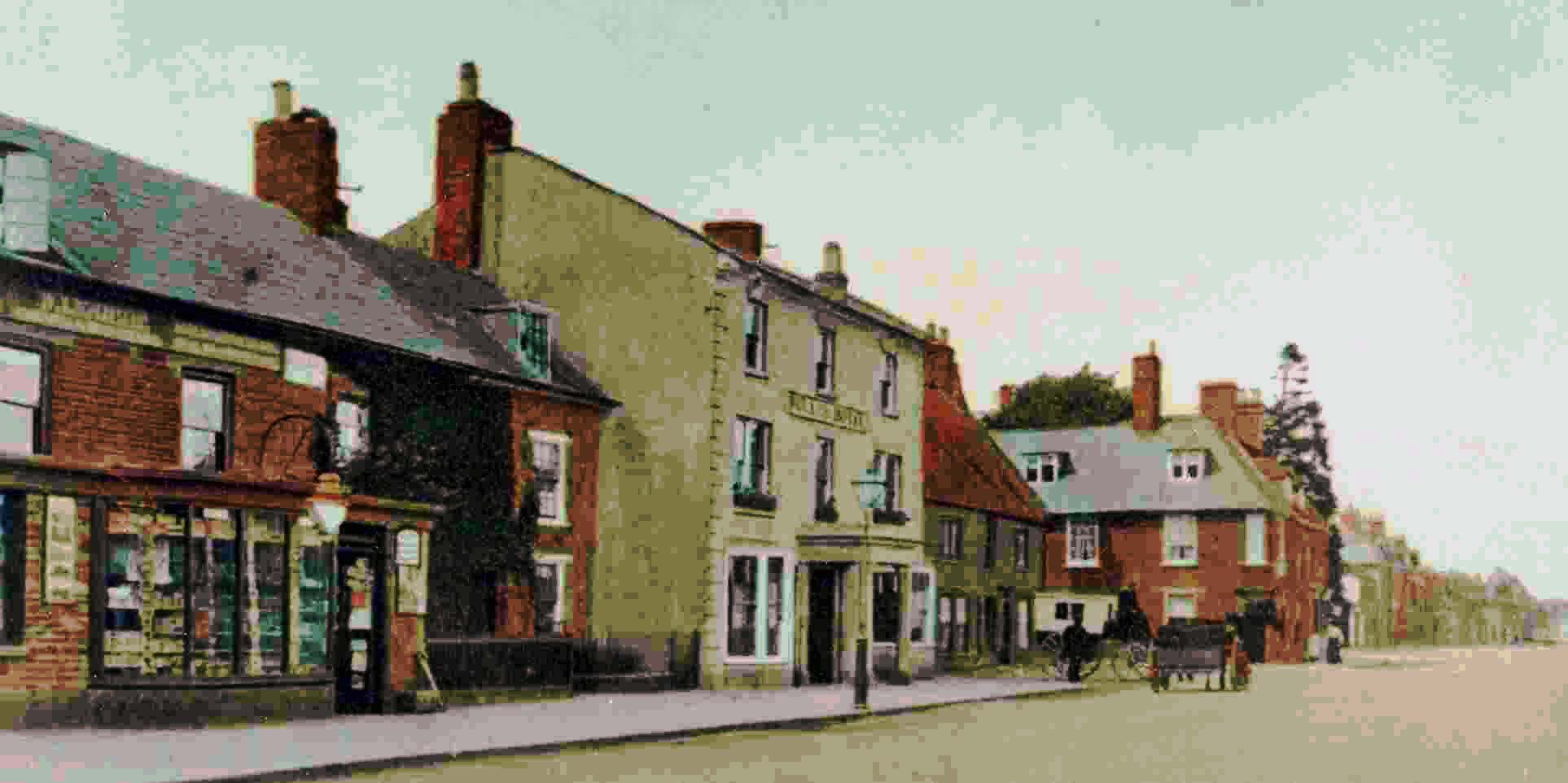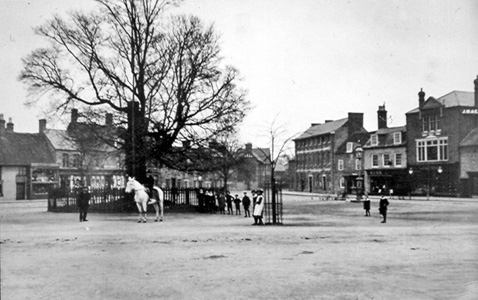
The Market Place – the reason for Olney’s status as a town – has always been the hub and centre of its life. Olney does not have a Market Charter, instead it has a ‘prescriptive’ market, one founded on ancient custom and viewed as an authoritative claim established by long use. A weekly market has been held on this Market Place since at least 1206 and two fairs held annually, the Cherry Fair in June and the Statute Fair in October.

The Cherry Fair coincided with the Church’s Patronal Festival. Holy Days and were the only ‘holidays’ workers had, so a licence was granted to the Lord of the Manor in 1316 to hold a Cherry Fair ‘for the vigil, feast and morrow of St. Peter and St. Paul’. It was designated a ‘Cherry Fair’ so that the fruit from the many orchards around medieval Olney could be sold off quickly. The Fair was originally held on the Market Place and later when it had primarily developed into a funfair it moved to the ‘Fair Field’ off East Street, now a residential street named Fairfield Close.
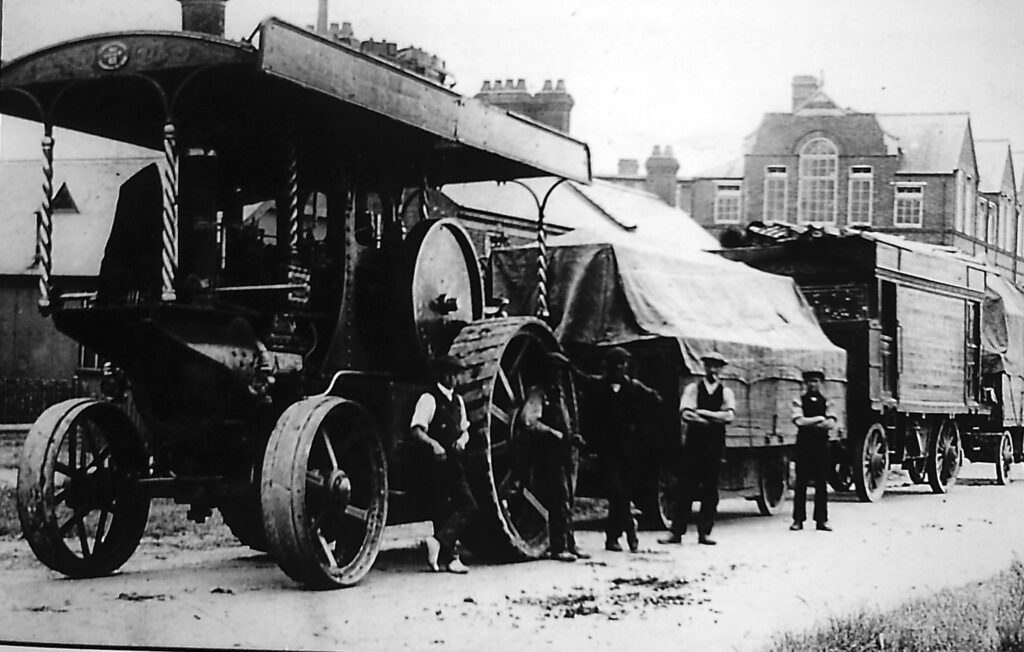
The Fair Train leaving Olney – possibly 1930s
Incidentally the bi-annual funfairs returned to the Market place after WW2, but some years later again moved to East Street and sited on ‘Olney’s Football Ground’ formally known as the ‘Nursery field’ or ‘Recreation Ground’.
The Statute Fair in October was probably the usual autumn hiring fair held in country districts when workers could put themselves up for hire. Prospective employers, each distinguished by a badge of office worn in his cap, came to view the various workers either on the Market Place or at an Inn, such as the Bull.
Moving forward a few centuries to the 18th century, the Kettering and Wellingborough to London Turnpike road ran along the western side of the Market Place while the southern side was known as ‘The Parade’.

The sketch dated 1860 is attributed to Walter Pennington Storer a local schoolmaster. This sketch appears to be the only visual evidence of a row of ‘untidy commercial buildings’ which ran from the Round House or Lock Up (Stone House on the sketch) to opposite the ‘poet’s house’ (Orchardside) on the eastern side of the Market Place. The buildings included a yard belonging to Lawrence Spencer, a butcher, also a pub (the Horse and Jockey) belonging to John Bent. On the southern side of Sheil Hall a Mr Paybody was operating a blacksmith’s forge. The annotations at the bottom of the sketch referring to the buildings on the west side of the Market Place are believed to be Hollingsheads, Wilson the barber, The Saracen’s Head and the Bull Hotel.The Statute Fair in October was probably the usual autumn hiring fair held in country districts when workers could put themselves up for hire. Prospective employers, each distinguished by a badge of office worn in his cap, came to view the various workers either on the Market Place or at an Inn, such as the Bull.
A well known Market Place image of that period has been added to assist the identification of the buildings on the sketch.

Olney’s market was held each Monday, but during the second half of the 19th century it fell into decline. Later the market was held fortnightly on Thursdays, and the Cattle Market revived and held again on Mondays. The general market today is still held on Thursdays, but the last cattle market was held in April 1987 and the last Fat Stock Show took place in 1986.
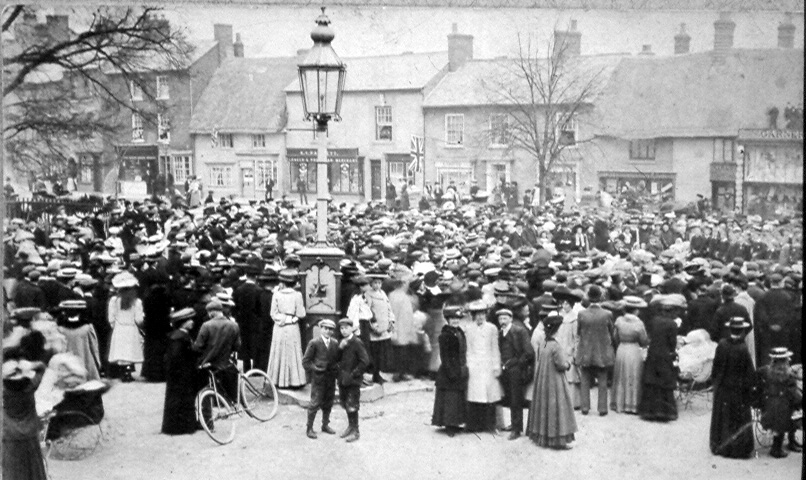
Note the Town Pump with the Lamp mounted on it
Originally the Lord of the Manor received the rents from the Market, but when part of Olney Court Estate was sold in 1941, Lot 6, entitled ‘Manorial Rights of Fair and Market belonging to the Manor of Olney’ was acquired by the then Olney Parish Council.
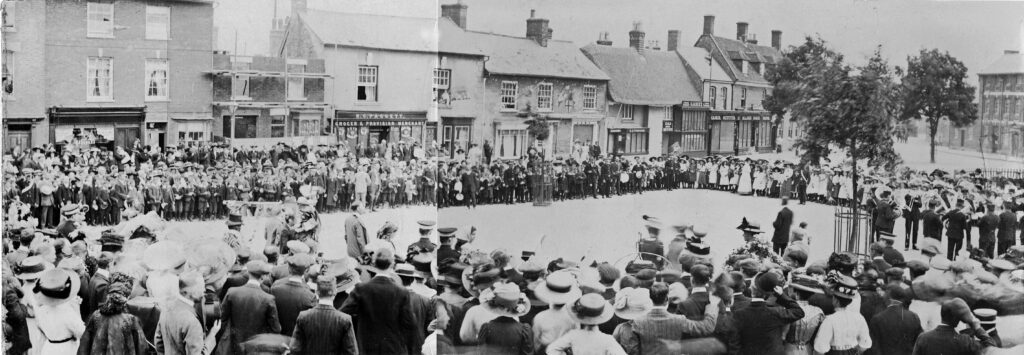
Today, the Thursday Market remains well attended and relatively stable in terms of the number of stalls and the variety of produce and goods available. In addition, a Sunday Farmer’s Market held on the first Sunday in each month, also appears to be stable and doing brisk business.

Also it needs to be acknowledged that the Market Place currently fulfils the important role of a very convenient, but somewhat inadequate, car park for most of the week and it is difficult to envisage a time when it will be able to relinquish this role.
Suggested links to the Olney Market Place – Heritage Trail using a smartphone with an optional audio commentary or an earlier Olney Market Place Trail without an audio commentary. This trail includes the history of several selected properties around the Market Square.
Also a link to a Youtube video version (3 min 42 secs) of the Market Place Trail without audio.
